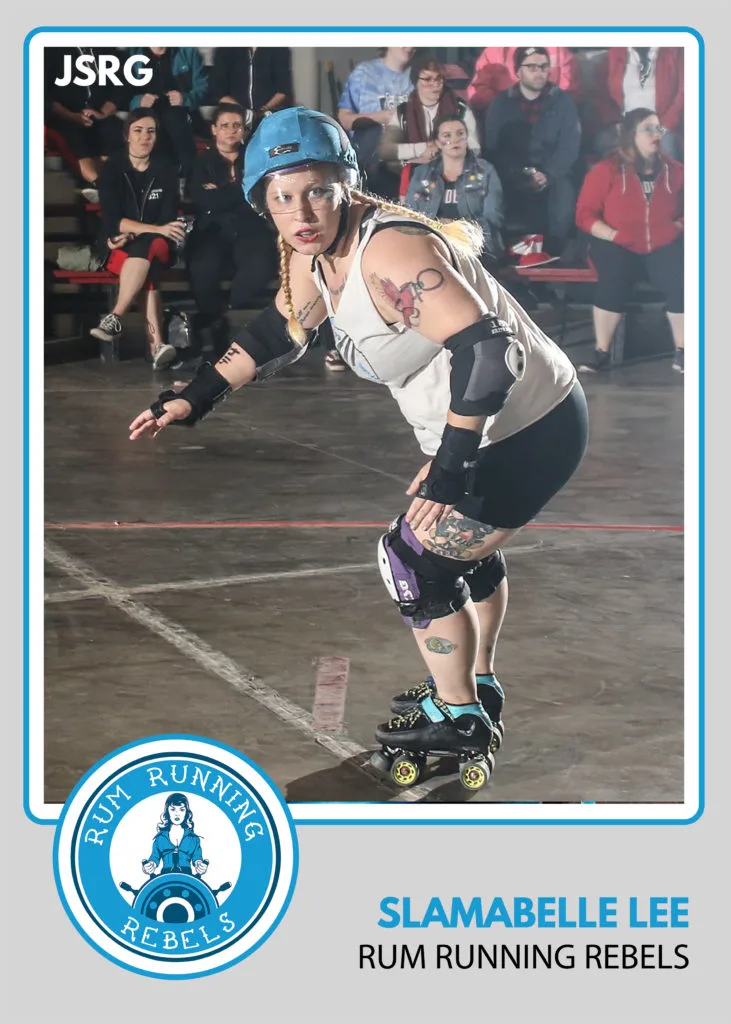the training switch from blocker to jammer
I can’t remember exactly how many times I jammed at practice before I played my first game in the jammer rotation. I can tell you this though – it wasn’t many. I could probably count it on two hands with fingers leftover.
2017 was a weird season for my team. A spat of pregnancies had left us extremely short-handed in the jammer department. Add to that a slew of injuries and bout unavailability, and our coaches were struggling to find anyone to put on the star and act like they knew what they were doing in a game. While I was proficient at pretending well enough around my teammates at our weekly scrimmages, going up against another team scared me beyond belief. Let me caveat that by saying that I am generally not a scaredy-cat. I’ll generaly accept any challenge as it comes along. But jamming against unfamiliar players in a competitive environment? Nope. No way. Not happening.
But it happened. There was a game where my captain said to me, “Well, we might need you to be a relief jammer.” That shifted when I heard the first three lineups being read out by my bench coach and heard my name to jam in one of the first three. Immediately, I felt nauseous and sweaty and nervous all over. This wasn’t what I asked for or wanted. But, being who I am, I decided to buckle down and bear it.
The game didn’t end in my team’s favor. We lost, pretty badly. But me personally? I won. I took home an MVP Jammer award (obviously my first one), and more importantly, I proved to myself, my team, my captains, and my coaches that maybe I could do this thing.
When I feel like I’ve latched on to something good in my life, I tend to go hard at it. Therefore, I decided to change my training style to go along with my newfound jamming skills. This required not only an overhaul of my physical training, but it required me to employ mental training for the first time ever. When I was a primary blocker, my mental game wasn’t a huge concern. However, jamming opened a whole new world for me and required me to really hone in mentally.
Jamming can be very lonely sometimes. There’s a lot of times where it’s 1 on 4, and your offense is nowhere to be seen. Maybe your pivot is in the box. Maybe the track opened up and and swallowed your wall whole. Whatever the case is, you can end up alone on the track very quickly. Just you and the other team, and they’re out there trying to make your life a living hell for those two minutes. Your mental training has to adapt to focus on the now. You can’t worry about the previous jam or the one coming up or even the next scoring pass. You have to focus on the hole that you have to find in the wall in front of you. Everything else is secondary to that. However, the only way to develop that mental strength is to practice that with your jamming. Don’t just practice the physical movement of breaking apart a wall – visualize it happening as well. It really helps the movement come to life and makes it a little easier to make things happen.
As far as physical training, I experienced a total turnaround. As a blocker, I would do low reps, high weight, and cardio was merely a necessary evil. However, when I switched to jamming, I ramped up my cardio game, switching to HIIT training as much as possible. When I ran or skated outdoors, I did sprint intervals followed by a short recovery period. When I lifted, I did high reps and low weight in order to lose weight, tone and tighten muscles, and move quicker throughout a bout. By training physically in this type of manner, I guided my body more towards jamming. The 30 pounds I dropped on the way definitely didn’t hurt.
My training schedule as a jammer looks like this:
- Monday – Endurance/Skills practice
- Tuesday – Interval Run
- Wednesday – Rest
- Thursday – Scrimmage Practice
- Friday – Interval Run or Skate/Lift
- Saturday – Lift/HIIT Workout
- Sunday – Rest
Taking two rest days per week became really important when I was taxing my muscles with HIIT and interval runs. It caused a lot of spasms in the beginning, and I needed to take more rest days than that at first just to let my body recover. Now that I’m adapted to this training style, I can stay pretty consistent in my scheduling, but it’s still an uphill battle as I seek to get better and better at jamming.
Jamming hasn’t been an easy road for me. It’s been a struggle, especially as I seek to move higher within my league and as a competitor. The transition has taught me a lot, however, both about my capabilities as an athlete and my ability to believe in something bigger than me – that is, scoring points for the sake of my team. I now never hesitate to grab the star. In fact, someone is going to have to pry it from my cold, dead hand. I love what I do as a jammer, and I don’t really ever want to transition back. However, if I do, I know I have a solid plan in place.
Like what we do? Consider chipping in a few bucks.


